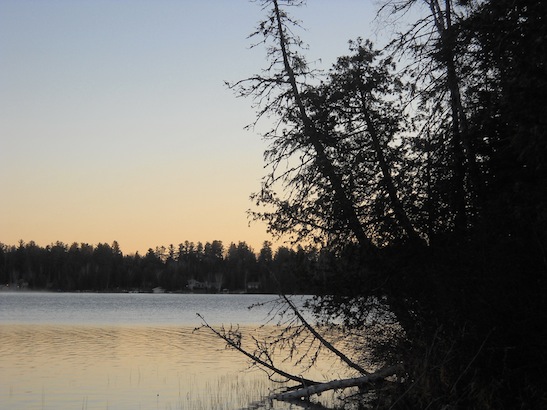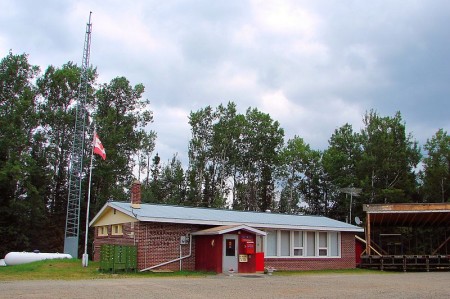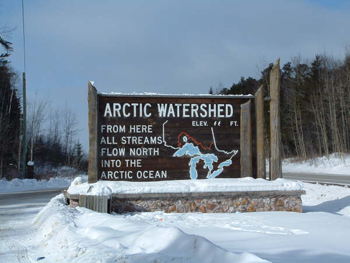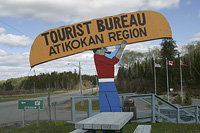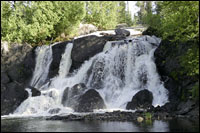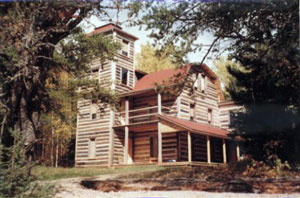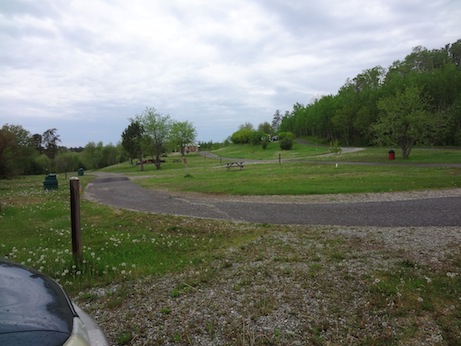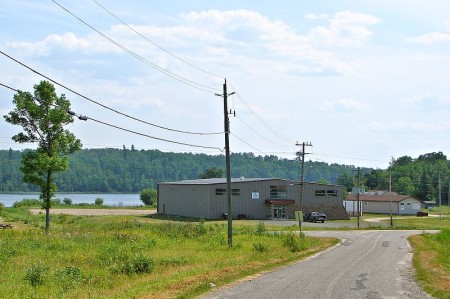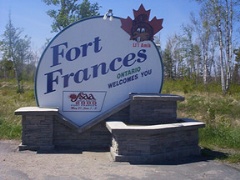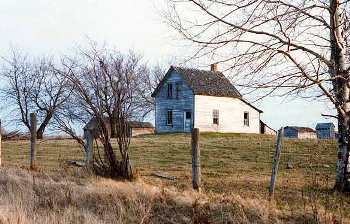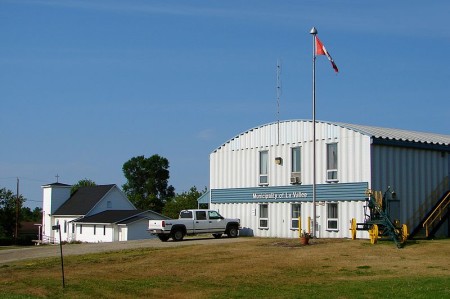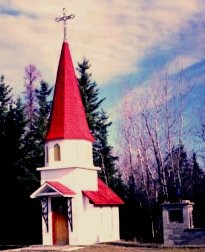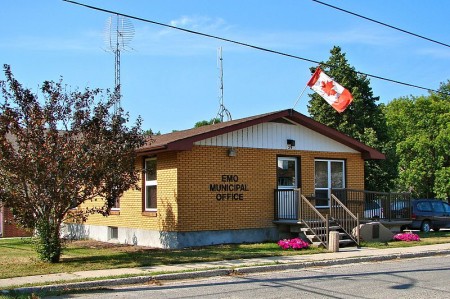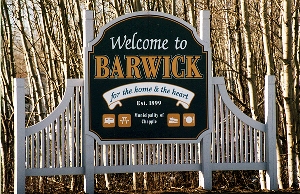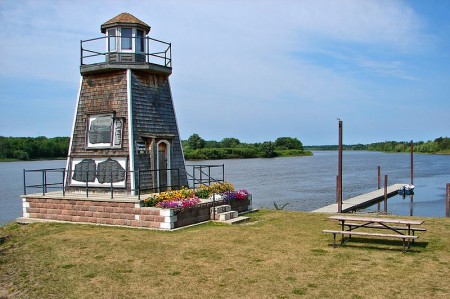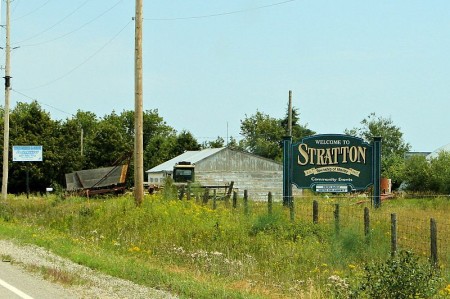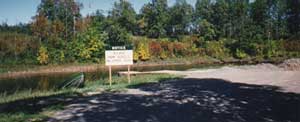She-ban-do-wan, ooby do dooby do do She-ba-qua-qua
That’s not a real song. I’ve just always thought that Shebandowan and Shebaqua Corners (well, minus the ‘Corners’) sounded like an improvised line from a minor Frankie Valli hit.
It’s kind of funny to think that even parts of Ontario as remote and in the wilderness as north-west Ontario have their own cottage countries. Or, as they like to call them up here, “camps”. Shebandowan is one such area – I guess if the hustle and bustle of Fort Frances or Rainy River is too much for you, you can escape here.
Seventy kilometres west of Thunder Bay, Shebandowan has access to three lakes (upper, middle, and lower) for swimming, boating, and fishing. Inco used to run a mine on the south side of the lake. There used to be a hotel in the area, but all that remains are some scattered stores. I’m told that this area of north-western Ontario is beautiful.
Linda emailed me the photo above and to let me know that there is more going on than I’ve reported. American visitors often frequent Beda’s Lodge. There is great pizza at the old Burstrom’s and the Shebandowan Pie Sale in August is the annual must go to event to see everyone, have a drink or two and go home with a fresh baked pie.
Shabaqua Corners is a small hamlet on Highway 11 west of Thunder Bay. What’s kind of neat about Shebaqua Corners is that every single vehicle either coming or going by way of Manitobagoes through this spot as there is no other way to get through Northern Ontario from out west.
As in most truck-stop towns, Shabaqua Corners has a local diner, an LCBO, a gas station, and a store. There used to be a hotel in town…Chris emailed to tell me that it is still open.
